In October 2022, Apple introduced a completely redesigned 10.9-inch iPad and updated iPad Pro, following the introduction of a new iPad Air earlier in the year and iPad mini in 2021. Those models, combined with the older 10.2-inch iPad, constitute Apple's full tablet lineup, which has not been updated since that time.
iPad Comparison

Which iPad Is Right for You?
To address the elephant in the room, 2023 marked the first time since the introduction of the original iPad in 2010 that Apple did not update a single model in the lineup. So as of early 2024, the entire lineup could use a refresh and indications are that all models will receive updates at some point during the year. But if you're still looking to buy, read on below for help with your decision!
If price is your biggest consideration, you'll want to look at the basic 10.2-inch iPad, knowing that it contains some older technologies. If you're looking for portability, check out the iPad mini with the latest hardware, and if you want a mid-sized iPad with more to offer than the entry-level iPad, check out the iPad Air.
What about the iPad Pro? Apple's high-end iPads are in a class of their own, and it shows in their higher price. Unless you're a pro-level user or price is no object, you'll probably want to look to cheaper options, but the iPad Pro models deliver cutting-edge technology for those who need it.
With that quick overview out of the way, let's take a look at what each model has to offer.
iPad Models
10.2-inch iPad
Starting at the low end of the iPad price spectrum, Apple has the basic 10.2-inch ninth-generation iPad starting at $329 for the Wi-Fi only model. This iPad is perfect if you're on a budget as it is also frequently on sale and is popular in the education field.
It has the most important features users are looking for in an iPad, like a generous display, Touch ID, and a decent rear camera, as well as support for the first-generation Apple Pencil if you're into drawing, handwritten notes, and other tasks that don't work quite as well with your finger.
It also includes an improved front-facing Ultra Wide camera with a 122º field of view and support for Center Stage, Apple's feature originally introduced in the iPad Pro which tracks faces in the field of view and digitally pans to follow you as you move.

The low-end price tag of the iPad does mean there are a few sacrifices, however, such as with the display that lacks an antireflective coating seen on other models that helps minimize glare on other models. The display also isn't laminated to the cover glass, so you'll notice a bit of an air gap rather than feeling like you're directly touching the screen.
Key specifications include:
- A 10.2‑inch Retina display with True Tone
- Home button with Touch ID
- A13 Bionic chip
- 8MP back camera with HDR for photos and 1080p HD video
- 12MP Ultra Wide front camera with HDR for photos and 1080p HD video
- Two-speaker audio
- First-generation Apple Pencil compatibility
- Smart Keyboard and Bluetooth keyboard compatibility
- Lightning port
- Available in Silver and Space Gray
10.9-inch iPad
Apple's tenth-generation version of the iPad has a larger 10.9-inch display and the A14 Bionic chip, and it starts at $449 for the Wi-Fi only model. If you're willing to spend a bit more money over the ninth-generation iPad, this iPad offers a good mix of features and improvements.
It has an entirely updated design, ditching the Home button and adopting the slim bezel design of the iPad Air and iPad Pro. It does still have Touch ID, but it's been moved to the power button on the top edge of the device. It also adopts USB-C instead of Lightning, and it has an improved 12MP Wide rear-facing camera.

This is still on the low end of the iPad family lineup, however, so you won't get support for the Apple Pencil 2 (only the first-generation model or the USB-C model) and storage caps out at 256GB.
Key specifications include:
- A 10.9-inch Liquid Retina display with True Tone
- Side button with Touch ID
- A14 Bionic chip
- 12MP Wide back camera and 12MP Landscape Ultra Wide front camera
- First-generation Apple Pencil compatibility
- Magic Keyboard Folio compatibility
- USB-C port
- Available in Blue, Pink, Silver, and Yellow
iPad mini
Next up is the iPad mini, which starts at $499 for Wi-Fi only models. That's $100 more than the previous generation's starting price, but the September 2021 update brought a massive upgrade to Apple's smallest tablet.
With a display size of 8.3 inches, you can't quite call it pocketable, but the iPad mini is definitely great for having something small on the go that still offers a much larger screen size than even Apple's largest iPhones.

Looking beyond the display size, this is a capable device using the same A15 Bionic chip from the iPhone 13 (albeit running slightly slower), so it's a speedy tablet. You'll get an improved display compared to the entry-level iPad, a better 12-megapixel rear camera with LED flash, and support for the more advanced second-generation Apple Pencil.
Key specifications include:
- Fully laminated 8.3‑inch Liquid Retina display with True Tone
- Touch ID in the power button
- A15 Bionic chip with 5-core graphics and 16-core Neural Engine
- 12MP back camera with Smart HDR 3 and 4K video
- 12MP Ultra Wide front camera with Smart HDR 3 and 1080p HD video
- Landscape stereo-speaker audio
- Second-generation Apple Pencil compatibility
- Bluetooth keyboard compatibility
- USB-C port instead of Lightning
- Available in Space Gray, Pink, Purple, and Starlight
iPad Air
Moving toward the higher end of the iPad family is the 10.9-inch iPad Air, which starts at $599 for Wi-Fi only models and is in many ways a larger sibling to the iPad mini. The iPad Air is also the perfect mid-tier option that offers many of the same features as the top-of-the-line iPad Pro but at a lower price point.
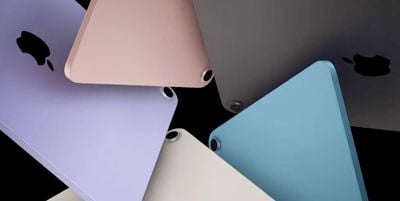
Key specifications of the 10.9-inch iPad Air include:
- Fully laminated 10.9‑inch Liquid Retina display with True Tone
- Touch ID in the power button
- M1 chip
- 12MP rear camera with Smart HDR 3 for photos and 4K video at up to 60 fps
- 12MP FaceTime HD front camera with Smart HDR
- Second-generation Apple Pencil compatibility
- Magic Keyboard, Smart Keyboard Folio and Bluetooth keyboards compatibility
- USB-C port instead of Lightning
- Available in Space Gray, Blue, Pink, Purple, and Starlight
iPad Pro
If you're looking for true portable workstation power, then the last two iPads in the lineup, the iPad Pro models, could be what you're interested in. These tablets were updated in October 2022 with the M2 chip, Smart HDR 4, Wi-Fi 6E, Apple Pencil's hover feature, and more.
These iPads, which start at $799 for the smaller 11-inch model and $1,099 for the 12.9-inch model, are a step up from the iPad Air in almost every way, from 120Hz ProMotion technology for smoother display responsiveness, a USB-C connector with Thunderbolt support, and mini-LED (only on the 12.9-inch model), to a more powerful M2 chip, dual rear cameras, and Face ID.

The iPad Pro is overkill for most users, but if you're a pro-level user or just want the latest technology, the iPad Pro has a lot to offer.
Key specifications of the two iPad Pro models include:
- 11‑inch Liquid Retina display
- 12.9-inch Liquid Retina XDR display
- Face ID
- M2 chip
- Two rear cameras: 12MP wide and 10MP ultra wide
- Smart HDR for photos, 4K video at 30 fps or 60 fps
- 12MP TrueDepth front camera with Center Stage, Portrait mode, Portrait Lighting, and Smart HDR
- Four-speaker audio
- 5G connectivity
- Second-generation Apple Pencil compatibility
- Magic Keyboard, Smart Keyboard Folio and Bluetooth keyboard compatibility
- Thunderbolt / USB 4 connector
- Available in silver and space gray
Customization Options
Now that we've looked at the base specs of each of iPad models, it's time to think about various options like storage, cellular connectivity, and AppleCare+.
Storage: There are several storage options for each iPad, so think about how much you might need. On the low end, the 10.2-inch ninth-generation iPad is available in two sizes: 64GB ($329) and 256GB ($150 upgrade at $479). This is a nice boost in storage, as both levels are double the amount offered in the previous generation.
For the tenth-generation iPad, iPad mini and iPad Air, Apple is offering the same two storage options: 64GB ($449 for iPad, $499 for mini, and $599 for Air) and 256GB (a $150 upgrade on the previous prices).

Lastly, the iPad Pro has the most storage capacity options. You can choose from the base 128GB option ($799 for 11-inch and $1,099 for 12.9-inch), or 256GB ($100 upgrade from base), 512GB ($300 upgrade from base), 1TB ($700 upgrade from base), and 2TB ($1,100 upgrade from base).
Power-heavy users should always look to the higher-capacity iPad models to ensure they don't have to worry about constantly deleting apps and other files for storage space. Otherwise, Apple's iCloud is a great way to offload files and lets you opt for a cheaper iPad with less storage.
Unless you're storing a large local music library, downloading lots of video for offline playback, have a ton of huge apps, or doing pro-level work requiring lots of large files, mainstream users can usually get away with the lowest-tier storage options, particularly now that all models start with at least 64GB.
Cellular Connectivity: If you need to ensure that you can use your iPad at any time, including when you're not near a Wi-Fi connection, you can opt for a Wi-Fi + Cellular option to ensure you're always connected.
Cellular support adds $130–$200 onto the price of all corresponding Wi-Fi iPad models, depending on which iPad and which storage capacity. You'll also have to sign up for a data plan for an additional cost with a supported carrier, like AT&T, Sprint, T-Mobile, or Verizon in the United States.
All told, it's not a cheap upgrade, and many users prefer using their phone as a hotspot to deliver connectivity to a Wi-Fi iPad while on the go. But if your phone plan doesn't allow for hotspot usage or you just want the convenience of having your iPad connected directly to a cellular network at all times, the option is there.
Something else worth considering is that all current iPad models with the exception of the ninth-generation iPad support 5G, which is significantly faster than 4G LTE on the low-end model. The iPad Pro supports both widespread sub-6GHz and faster-but-limited-availability mmWave 5G in the U.S., while the all other 5G-capable models support only sub-6GHz 5G.
AppleCare+: New iPads come with one year of hardware repair coverage through Apple's limited warranty policy, as well as up to 90 days of complimentary support. But if you want more coverage, Apple offers optional AppleCare+ packages priced at $69 for the iPad and iPad mini, $79 for the iPad Air, $129 for the 11-inch iPad Pro and $149 for the 12.9-inch iPad Pro. Monthly pricing options are also available.
AppleCare+ extends your iPad's coverage to two years from the purchase date and adds unlimited incidents of accidental damage coverage, subject to a service fee of $49 plus applicable taxes in the United States. Prices vary elsewhere.

iPad AppleCare+ plans also cover accidental damage to the Apple Pencil and Apple-branded iPad keyboard accessories for up to two years with a $29 fee plus tax per incident. AppleCare+ provides 24/7 priority access to support advisors via online chat or phone for up to two years after the iPad's original purchase date.
Apple charges high fees for accidental damage to a new iPad without AppleCare+, so as with most forms of insurance, the plan can pay for itself if ever used. AppleCare+ must be added within 60 days of purchasing a device.
Accessories
Each iPad has a plethora of accessories to choose from for protection, style, or usability, many of which Apple creates and sells itself on Apple.com and in Apple retail stores.
Apple Pencil: The Apple Pencil is a stylus most popular with artists but also used by others, providing a comfortable and streamlined way to interact with the tablet. The second-generation Apple Pencil introduced sleek design changes, magnetic charging on the iPad mini, iPad Air, and iPad Pro, and gesture controls, none of which are available on the original Apple Pencil. A new USB-C Apple Pencil introduced in late 2023 complicated the situation even further.

It might be unclear which iPads support which Apple Pencil models, so check out our list below. In short, the iPad Pro and recent iPad Air and iPad mini models use the second-generation Apple Pencil while cheaper and older iPad models work with the first-generation Apple Pencil and the USB-C Apple Pencil supports a mix of recent devices.
- First-Generation Apple Pencil ($99): 9.7-inch iPad (2018), 10.2-inch iPad (2019, 2020, and 2021), 10.9-inch iPad (2022), fifth-generation iPad mini (2019), third-generation iPad Air (2019), 9.7-inch iPad Pro (2016), 10.5-inch iPad Pro (2017), first- and second-generation 12.9-inch iPad Pro (2015 and 2017)
- Second-Generation Apple Pencil ($129): sixth-generation iPad mini (2021), fourth-generation iPad Air (2020), fifth-generation iPad Air (2022), 11-inch and 12.9-inch iPad Pro (2018, 2020, 2021, and 2022)
- USB-C Apple Pencil ($69): 10.9-inch iPad (2022), sixth-generation iPad mini (2021), fourth-generation iPad Air (2020), fifth-generation iPad Air (2022), 11-inch and 12.9-inch iPad Pro (2018, 2020, 2021, and 2022)
In the end, if you're only looking to purchase an iPad as a convenient app-browsing, email-checking, or FaceTime device, you don't need an Apple Pencil. But if you're an artist or other creative with a penchant for drawing or taking digital handwritten notes, Apple's stylus is definitely an enhancement to the iPad experience.
For a more in-depth look at the differences between the three Apple Pencils, check out our comparison.
Cases: Apple sells Smart Cover and Smart Folio cases for all of its iPads, priced depending on the size of the device. You'll pay $39 for an iPad mini Smart Cover, $49 for an iPad Air or 10.2-inch iPad Smart Cover, $59 for an iPad mini Smart Folio, $79 for an iPad Air, tenth-generation iPad, or 11-inch iPad Pro Smart Folio, and $99 for a 12.9-inch iPad Pro Smart Folio.
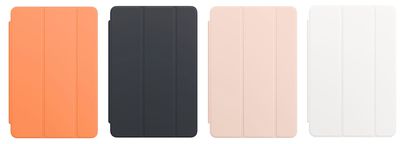
These cases magnetically attach to your iPad, offering a degree of protection while also allowing you to place the tablet in numerous angled positions. The difference between the two is that the iPad Pro's Smart Folio cases protect the rear of the tablet as well as the front, while the Smart Cover cases only protect the front.
Keyboards: If you're looking to do a lot of work on an iPad Air or iPad Pro, Apple has introduced a Magic Keyboard that includes a trackpad, USB-C port with passthrough charging, and backlit keys. It's certainly not cheap, priced at $299 for the 11-inch version and $349 for the 12.9-inch version, but for pro-level users, it's a serious upgrade to the iPad experience.

For those who still want a keyboard for their iPad Pro but don't want to spend quite as much money, Apple also sells the Smart Keyboard Folio at $179.00 for the 11-inch model and $199.00 for the 12.9-inch model. This case is just like the Smart Folio, with an added Bluetooth keyboard for enhanced productivity. A similar accessory is available for the 10.5-inch iPad Air and 10.2-inch iPad.

The 10.9-inch iPad also has its own Magic Keyboard Folio, priced at $249.00 and available in White. It has a built-in trackpad, a 14-key function row, and a two-piece design with a detachable keyboard and protective back panel that both attach magnetically to the iPad.
These Apple-made cases are compatible with iPads that have a Smart Keyboard connector, which is a special port that magnetically attaches the keyboard to the side or rear of the iPad.
Otherwise, you can also look into popular iPad keyboard manufacturers like Brydge, Logitech, and Belkin, all of which sell Bluetooth keyboards that connect to iPads wirelessly. Keyboard cases are more expensive than your average case due to the added input use, but if you really plan on doing a lot of work and writing on your iPad, the two-in-one keyboard/protection combo is the way to go. The hardware keyboards give a much better typing experience and free up screen space on your iPad by getting rid of the software keyboard.
Cables: Apple's iPad lineup is still transitioning from Lightning to USB-C, making matters a bit confusing. The easy way to remember it at this point is that only the entry-level 10.2-inch ninth-generation iPad still uses a Lightning cable.
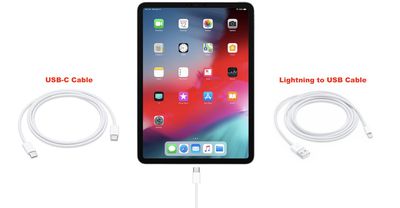
If you're going with an iPad mini, tenth-generation iPad, iPad Air, or iPad Pro, then you'll be using USB-C cables. All iPads come with their required cables in the box, but if you don't have many around the house it's always a good idea to stock up on more. Apple sells individual cables, but you can always shop around on Amazon for cheap and reliable brands like Anker.
So... Which iPad Should You Buy?
Overall, Apple's 10.9-inch iPad Air is a perfect all-encompassing tablet that should hit the checkmarks for many buyers. It has most of the features of the iPad Pro but starts at $200 less. If you're on a bit more of a budget, the 10.9-inch tenth-generation iPad saves you an additional $150 compared to the iPad Air while giving you the same form factor and display size with a few compromises.
If you're someone who has preferred the small form factor of the iPad mini over the years, Apple's latest small-sized tablet is well worth the update with an even bigger screen packed into roughly the same size body and has nearly all of the same features as the iPad Air. The iPad mini doesn't have a Smart Keyboard connector like the iPad Air or a Smart Keyboard case of its own, but since the iPad mini isn't exactly a workstation device, that's not a bad trade-off (plus, you can still connect it to a Bluetooth keyboard if you want).
For $100 less than the iPad Air at $499 (64GB Wi-Fi), the iPad mini still gives you a nice laminated display with True Tone and antireflective coating, Touch ID in the power button, an even faster A15 Bionic chip, the same second-generation Apple Pencil support, and better cameras.
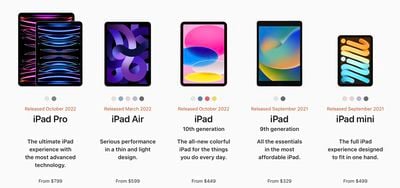
If you're shopping around for a cheap tablet for a kid, definitely consider Apple's 10.2-inch ninth-generation iPad, which sees discounts below its normal $329 price tag pretty often. Sale prices in the $250–$270 range are not unheard of for these models once they've been out for a bit, and pairing the iPad with a super-rugged child-proof case is a perfect birthday or holiday present. Frugal shoppers should also check out Apple's refurbished store to shop around for older-model iPads offered at discount.
And, of course, on the other end are the power users. If you're willing to spend the money to spec out a 12.9-inch iPad Pro, you'll get a super reliable mobile workstation with 10-hour battery life in a 1.5 lb package. If you travel frequently for work, or just like setting up at a coffee shop during the day, the iPad Pro has a chance to become your MacBook replacement with a paired keyboard.
While Apple's iPad lineup is getting a bit long in the tooth, it still provides a wide variety of options and offers clear distinctions between tablets that should help make your decision a little easier.



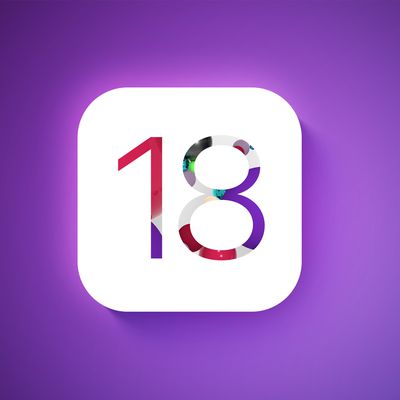

















Top Rated Comments
Now time for Apple to fix the Macbook lineup....
Anyway, the point I’m trying to make is that I’ve switched to getting WiFi-only iPads and tethering (damned auto-correct!) to my iPhone, which works perfect and saves me in the cost of the iPad itself and the data plan. But, apparently, according to this article, it depends on if your phone carrier allows this, I guess. AT&T does and it works with both my MBA & iPad great.
* The Air 3's CPU (A12) is 20% faster than that of the Pro 10.5" (A10X) as per Geekbench 4 scores
* The Pro 10.5" has 1GB more RAM which may mean that Apple might give it some features it doesn't the Air 3 in future versions of iOS
* The Pro 10.5" has a 120Hz ProMotion display while the Air 3 has a 60Hz display. This, in my opinion, is a major feature as it makes the overall experience much smoother
* The Pro 10.5" has quad speakers as opposed to stereo ones on the Air 3
* The Pro 10.5" has a 12MP camera w/ flash; the Air 3 has an 8MP one